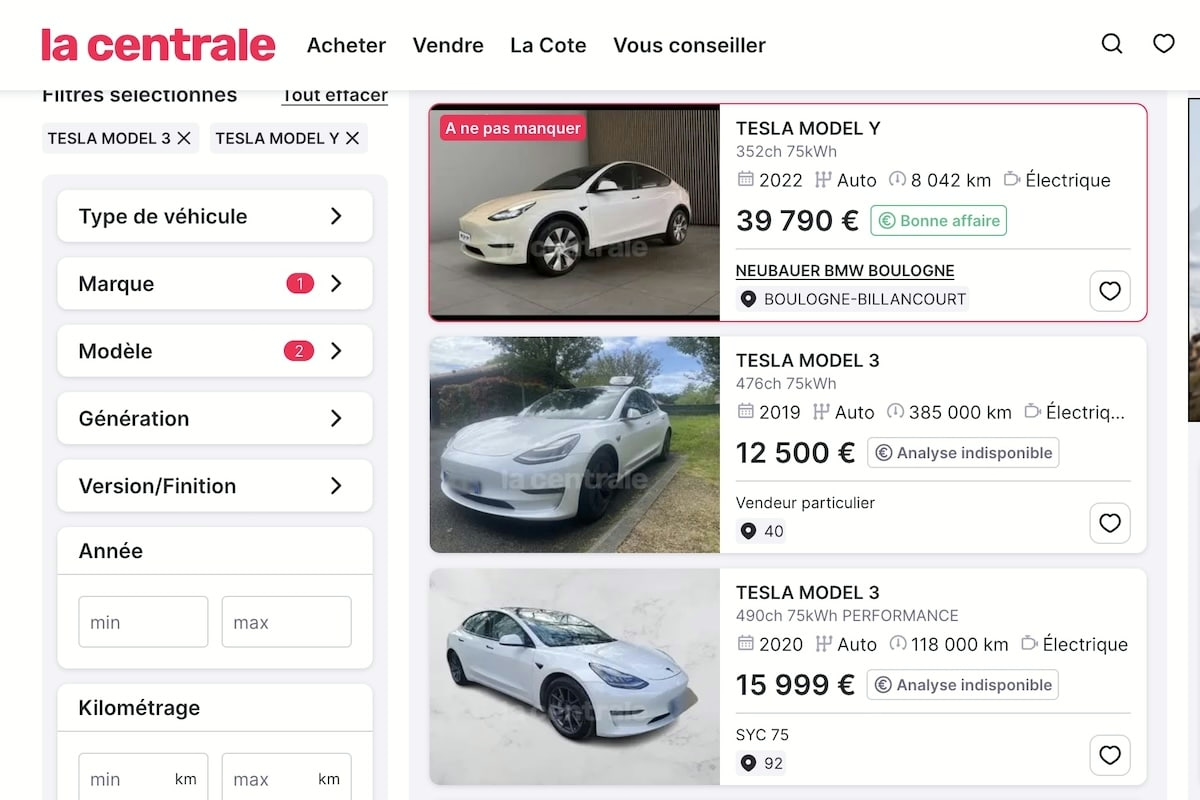Used Tesla on La Centrale: A Mess Turns into a Nightmare

Anyone who attempted to find their dream used Tesla on the La Centrale website probably needed to take a painkiller to make sense of it.
In an age where scams are rampant all over the web, especially on used car sites, you may feel dizzy while searching for a second-hand Tesla. And the leading specialized site in France is no exception.
Searching for a used Tesla on La Centrale is like trying to solve a Rubik’s Cube in the dark. You expect a serious, structured, and reliable platform to buy a vehicle costing tens of thousands of euros. Instead, you find yourself facing an organized chaos where essential information is systematically incorrect, incomplete, or even completely fabricated by sellers.
It’s hard to blame them, as the manufacturer itself maintains ambiguity regarding the technical specifications of its cars. Who knows, with precision, the battery capacity of their Model Y Propulsion? It varies depending on its origin (Europe or China), the model year, etc. The same goes for power, and so on.
Specifications as reliable as a Cybertruck
Take ten listings for a Model 3 on La Centrale. You’ll encounter ten different power ratings, ten absurd battery capacities (a special mention goes to the one listed at 80 kWh, which doesn’t exist at Tesla), and no consistency in the versions. It is almost impossible to determine whether you are looking at a Standard Range Plus, a Long Range, or a Performance model.
Range? Sometimes listed, sometimes not. Power? Sometimes in horsepower, sometimes in kilowatts, often completely off the mark. And even the type of transmission — which should be obvious on a Tesla — is sometimes incorrect.
The problem arises from both the sellers who do not always understand what they are selling and La Centrale, which seems to make no effort to standardize or verify the listings.
No structured form for the specifications of electric vehicles, no automatic suggestions of official Tesla versions, no relevant filters for battery size or type of powertrain. We are far from the expected standards in 2025, especially for a platform that aims to be a leader in the used car market.
An incomprehensible jungle for the buyer
The direct consequence: an average buyer has no chance of understanding what they are looking at. A Model 3 priced at €23,000 could very well be a 2020 Propulsion with LFP battery, or a downgraded ex-VTC version, or an imported model. And none of the listings will clearly state this.
Even worse, some “professional” listings deliberately maintain this ambiguity to pass off a basic version as a Performance model. Add in the approximations regarding equipment (Autopilot? FSD? Heat pump?), and you have the perfect recipe for purchase errors costing €30,000.
Used Teslas are not just cars like any other. They evolve through software updates, have unknown technical subtleties, and their residual values fluctuate greatly depending on the exact configuration. This is not a Clio with or without aluminum wheels: it’s an entire ecosystem.
Leaving sellers and buyers to navigate through this fog of information is irresponsible. And that La Centrale still hasn’t established a serious system for identifying Tesla versions speaks volumes about their lack of adaptation to the new automotive landscape.
In conclusion, if a used Tesla appeals to you, the wisest and safest solution is to limit yourself to the official Tesla network through dealerships and the manufacturer’s website. There, the configurations are accurate thanks to the serial number (VIN)… but the prices are also a bit higher. You can’t have it all…
ALSO READ: Tesla: the registration tax is driving up car prices
This page is translated from the original post "Tesla d’occasion sur La Centrale : un foutoir qui vire au cauchemar" in French.
We also suggestthese articles:
Also read





